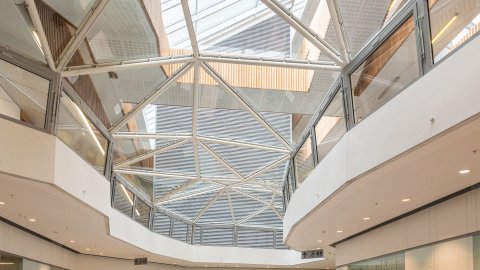15:00
Wave: A New Family of Trapdoor Preimage Sampleable Functions Based on Codes
It is a long-standing open problem to build an efficient and secure digital signature scheme based on the hardness of decoding a linear code which could compete with widespread schemes like DSA or RSA. The latter signature schemes are broken by a quantum computer with Shor’s algorithm. Code-based schemes could provide a valid quantum resistant replacement. We present here Wave the first « hash-and-sign » code-based signature scheme which strictly follows the GPV strategy which ensures universal unforgeability. It uses the family of ternary generalized $(U, U+V)$ codes. Our algorithm produces uniformly distributed signatures through a suitable rejection sampling (one rejection every 3 or 4 signatures). Furthermore, our scheme enjoys efficient signature and verification algorithms. Typically, for 128 bits of classical security, signatures are in the order of 10 thousand bits long and the public key is in the order of one megabyte.
p-Adic Asai L-functions of Bianchi modular forms
Abstract
The Asai (or twisted tensor) L-function attached to a Bianchi modular form is the 'restriction to the rationals' of the standard L-function. Introduced by Asai in 1977, subsequent study has linked its special values to the arithmetic of the corresponding form. In this talk, I will discuss joint work with David Loeffler in which we construct a p-adic Asai L-function -- that is, a measure on Z_p* that interpolates the critical values L^As(f,chi,1) -- for ordinary weight 2 Bianchi modular forms. We use a new method for constructing p-adic L-functions, using Kato's system of Siegel units to build a 'Betti analogue' of an Euler system, building on algebraicity results of Ghate. I will start by giving a brief introduction to p-adic L-functions and Bianchi modular forms, and if time permits, I will briefly mention another case where the method should apply, that of non-self-dual automorphic representations for GL(3).
A Boundary Layer Analysis for the Initiation of Reactive Shear Bands
Abstract
Unintended low energy thermal or mechanical stimuli can lead to the accidental ignition of explosive materials. During such events, described as ‘insults’ in the literature, ignition of the explosive is caused by localised regions of high temperature known as ‘hot spots’. We develop a model which helps us to understand how highly localised shear deformation, so-called shear banding, acts as a mechanism for hot spot generation. Through a boundary layer analysis, we give a deeper insight into how the additional self heating caused by chemical reactions affects the initiation and development of shear bands, and highlight the key physical properties which control this process.
Asymptotic normality in random graphs with given vertex degrees.
Abstract
We study random (simple) graphs with given vertex degrees, in the sparse case where the average degree is bounded. Assume also that the second moment of the vertex degree is bounded. The standard method then is to use the configuration model to construct a random multigraph and condition it on
being simple.
This works well for results of the type that something holds with high probability, or that something converges in probability, but it does not immediately apply to convergence in distribution, for example asymptotic normality. (Although this has been done by special arguments in a couple of cases, by Janson and Luczak and by Riordan.) A typical example is the recent result by Barbour and Röllin on asymptotic normality of the size of the giant component of the multigraph (in the supercritical case); it is an obvious conjecture that the same results hold for the random simple graph.
We discuss two new approaches to this, both based on old methods. Both apply to the size of the giant component, using rather minor special arguments.
One approach uses the method of moments to obtain joint convergence of the variable of interest together with the numbers of loops and multiple edges
in the multigraph.
The other approach uses switchings to modify the multigraph and construct a simple graph. This simple random graph will not have a uniform distribution,
but almost, and this is good enough.
Commutative-by-finite Hopf algebras
Abstract
Roughly speaking, a commutative-by-finite Hopf algebra is a Hopf
algebra which is an extension of a commutative Hopf algebra by a
finite dimensional Hopf algebra.
There are many big and significant classes of such algebras
(beyond of course the commutative ones and the finite dimensional ones!).
I'll make the definition precise, discuss examples
and review results, some old and some new.
No previous knowledge of Hopf algebras is necessary.


